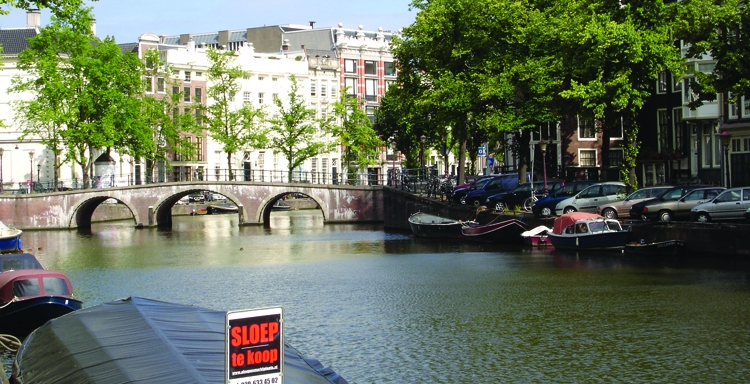Amsterdam is one of the most fascinating cities in Europe.
It has come a long way from the original marsh-bound fishing village beside the mouth of the Amstel River. Frequent floods taught the hardy natives to build high, and control the surrounding waters with canals, dykes and polders, and the secure and strategic position encouraged the development of trade. Beer and herrings were the most important trade goods in the 14th century, and these are still important today.
The 16th century brought wealth and power and the attention of foreign rulers. Holland was then ruled by the Spanish Hapsburgs who tried to halt the wave of Protestantism sweeping northern Europe; unavailingly, but it took 80 years of struggle. By the end of the century, Amsterdam was the free capital of the new Dutch Republic and about to begin a massive programme of construction, expansion and development.
The people who had forged the new republic had fought long and hard for individual freedom of conscience, and the concept of freedom of speech was established early and firmly, and stands firm to this day; with the practical caveat that no-one should be harmed by the actions of others.
The 17th century expansion saw three great rings of canals built as concentric horseshoes around the original settlement on both sides of the canalized Amstel. Wealth poured into the booming city, and a great flowering of the arts took place, with painters, architects and craftsmen all thriving, as traders and wealthy merchants invested in houses and warehouses.
Amsterdam is a city of cafés and bars – more than 1500 of them: small and large, cosy and trendy, traditional and modern. Amsterdam has been famous for its beers for 700 years, and there are plenty to choose from, and there are wines from all over the world and the excellent local Dutch gin, or jenever, drunk straight or with a chaser.
Amsterdam’s famous tolerance also extends to the cannabis “smoking coffee shops”. Although technically illegal, the city fathers decided to permit the opening of these small establishments as an experiment, hoping by exercising tolerance over cannabis that the city’s then severe hard-drug problem might be ameliorated.
The experiment is 30 years old, doing well, and the authorities are looking at regulating the wholesale supply which is still in the hands of the underworld, given the technical illegality of the whole scheme.
Amsterdam has all sorts of hotels to choose from. The Crème de la Crème traveller might pick the huge Grand Hotel Krasnapolsky, near Dam Square, or the discreet and charming boutique Dylan Hotel, with its canal-side entrance, and private rear courtyard and its individually-designed rooms and excellent restaurant.
Shopping isn’t for the faint-hearted. Thankfully bereft of many of the chain-stores that stifle the High Streets of the rest of Europe, Amsterdam offers the dedicated shopper many happy hours of indulgence. De Bijenkorf on Dam Square is Holland’s best-known department store, and the toy department has possibly the best selection of toys that your correspondent has ever seen: fascinating toys that you will never see anywhere else. Even further up-market, Maison de Bonneterie and Metz & Co should be your next ports of call. There are dozens of regular local street markets and some specialist markets for antiques, stamps and coins, flowers, and gourmets looking for something extra tasty.
Delftware, Dutch-made porcelain in the Chinese manner, is rare now as only one factory survives. It still fetches good prices. Antique Delft dates from the 17th century, and Amsterdam Antiques Gallery won’t rob you. Look at what Christie’s and Sotheby’s have for sale while you are there. They have regular jewellery auctions as well.
Amsterdam is still a centre for cutting and polishing diamonds and has its place in the diamond trading world. There are many places worth exploring around Spiegelgracht, for antiques and antique jewellery.
